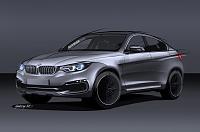Welcome to the Auto Repair Manuals.
More aggressive look for new BMW X6
4 stars based on
1 reviews
-
 More aggressive look for new BMW X6
More aggressive look for new BMW X6

Similar Threads
-
By Auto News in forum AutoNews
Replies: 0
Last Post: 02.02.2014, 04:30
-
By Auto News in forum AutoNews
Replies: 0
Last Post: 01.02.2014, 03:30
-
By Auto News in forum AutoNews
Replies: 0
Last Post: 28.01.2014, 02:42
-
By Auto News in forum News
Replies: 0
Last Post: 19.12.2012, 08:46
-
By Auto News in forum News
Replies: 0
Last Post: 18.12.2012, 08:48



 LinkBack URL
LinkBack URL About LinkBacks
About LinkBacks